| Columns Retired Columns & Blogs |
A wonderful and informative review - as always.
On the Miyajima Labs website, the designer described the sound this way: "The bass is thick and tight. Midrange is firmly insisted. A treble that has no useless resonances is realistic. Sound separation is the best ever. It is a feeling that all the performers are putting their feet on the ground."
Though the designer's English leaves a great deal to be desired, that description needs no further translation, and I concur completely. Through all the phono preamps on hand here, the Destiny was definitely "feet on the ground"!

Construction quality of the review sample was exemplary, with azimuth perfectly set when the cantilever was dead-on perpendicular to the record and 92-degree SRA was achieved with the arm parallel to the record. Separation was in excess of 27dB in both directions and balanced within 1.5dB. The cartridge tracked like a warm knife through butta up to the 80µm peak track on my Ortofon test record, which is very good MC tracking performance.
Tight Lines (Stereophile STPH 022-1), an album of chamber music for a moderately large ensemble (including a 17-person–strong string section), composed and conducted by fellow Stereophile writer Sasha Matson, proved to be the ideal demonstration disc for confirming all of the cartridge designer's claims. Recorded at 24/96 to ProTools by Michael C. Ross at EastWest in Los Angeles (a studio originally built for Frank Sinatra by legendary recording engineer Bill Putnam), the album was produced and digitally mastered by John Atkinson, and then prepared for LP release by first being transferred to 30ips tape on a Studer A67.
It's a super-transparent, relatively close-miked recording (with a pair of Neumann M50 omnis positioned above the conductor's head to grab the room sound) that the Destiny effectively transcribed, producing an effortless yet weighty, well-detailed, three-dimensional picture free of mechanical artifacts, yet with transients well-defined and believable.
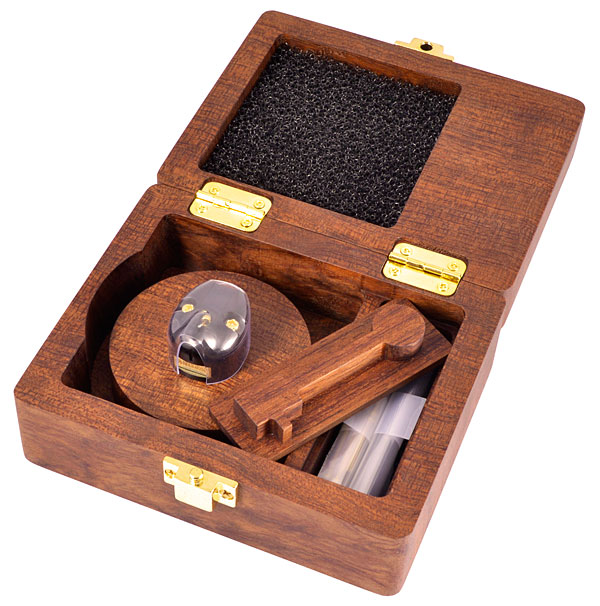
The contrabass and cellos had taut bottom end weight (especially when called upon to growl), while above, percussion shimmered and glistened cleanly in three-dimensional space as did the harp on side one's eerie "Annunciation" (for violins and harp with echoes).
When on the title track the clicky buzz of a flyfishing reel kicks in between the speakers, you'll swear it's in the room floating in space between the speakers.
The Destiny's bold but well-controlled bottom end helped coax from this studio recording a solid room-sound backdrop, against which the bigger stringed instruments were full bodied, both texturally and timbrally. On well-recorded live large concert hall albums, the Destiny delivered the space with equal effectiveness and did so without muddying up transient bass definition.
If the early Miyajimas (especially the monos) tended to be warm, full, and somewhat soft sounding, the nude Shibata-stylus–fitted Madake moved things closer to neutral, while the Madake Snakewood was a downright well-detailed speed merchant that at the same time didn't sacrifice much of the bottom-end richness for which these cartridges are known. (I use the past tense because the Snakewood version is no longer on the Miyajima Labs website.)
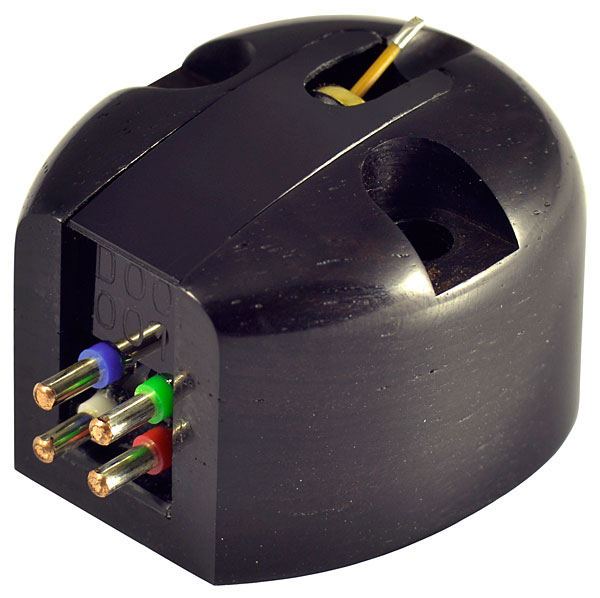
The Destiny takes the Snakewood's speed and detail, backs it off slightly, returns some of the early cartridges' bottom-end richness and weight, and makes everything bigger and bolder, yet well-proportioned. In other words, everything promised by Noriyuki Miyajima, who also says, "When you finish listening to the LP, you will feel like clapping players unintentionally." I agree with that too! Whatever it means.
It's nice when the manufacturer and reviewer are on the same page! The Madake Snakewood is a great cartridge (I own one), but in my opinion the Destiny is for now Miyajima Labs' best performing cartridge.
Sutherland Phono Loco
If there are any serious downsides to current-amplification–based phono preamplifiers (when used with the low-output, low–internal-impedance moving-coil cartridges for which they're designed), I've not yet encountered them. And I've reviewed many, starting a full 11 years ago with the Aqvox 2Ci. That was designed for Aqvox by Carlos Candeias of B.M.C., whose Phono MCCI I reviewed in 2013. More recently, in the June 2019 Stereophile, I covered Channel D's Lino C 2.0—and I own CH Precision's P1/X1 combo. So I'm all in with this technology, although I still couldn't do without the voltage-amplification Ypsilon VPS-100. I need to have both kinds of phono preamplifiers.

For more information about transimpedance input phono preamps, please see the October 2019 Stereophile for Brian Damkroger's excellent review—and John Atkinson's measurements—of Sutherland's $3800 Little Loco: Its circuit design is similar to that of the company's big $8200 Phono Loco (footnote 6), including its use of plug-in resistors to adjust gain where necessary. For this review, I left the Phono Loco's 3k resistors in place. (Removing them increases gain by 6dB; replacing them with the supplied 1k resistors reduces gain by 6dB.)
One big difference is the Phono Loco's use of balanced XLR inputs—something that for most of us will require RCA-to-XLR adapters. (Pin 1 must be disconnected from pin 3.) Not a big deal. Another difference is the Phono Loco's use of higher-quality parts (including WBT nextgen RCA output jacks with silver contacts) and a more robust internal power supply.
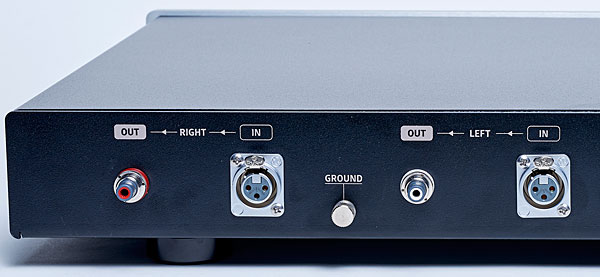
The more costly, solidly built Phono Loco is the same width as the Little Loco, slightly taller (by 1.25"), and four inches deeper. Weighing 21lb, it's 6lb heavier than the Little Loco.
Plug in the Phono Loco and you're ready to go: There's not even an on/ off switch. I ran it using the Ortofon Anna Diamond, the Miyajima Labs Destiny, the Haniwa HCTR-CO, and a Lyra Atlas SL—all good candidates for the way the Phono Loco operates, especially the Haniwa. (I'm not sure why Brian Damkroger's Lyra Titan-i didn't work well with the Little Loco, because the Atlas SL surely did.)
With no loading options—none are needed—what you hear is what you get, and while of course each cartridge had its own sonic signature, the Phono Loco produced consistent results with all.
The Phono Loco was, as BD described its stablemate, an imaging and staging champion. It set up a picture farther back in space than does my far more costly reference CH Precision P1/X1 current-mode phono preamplifier (which is neither better nor worse, just different), with finely focused (though not overly sharp), appropriately sized, solidly three-dimensional images set against a very black backdrop. The Phono Loco was quiet, too.
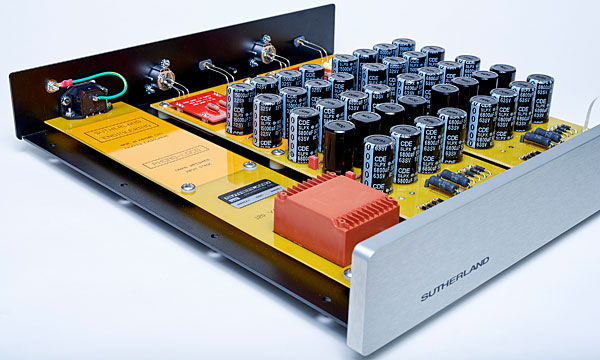
While instrumental attack was pleasingly natural and neither overly aggressive nor boringly soft, the Phono Loco's sustain was somewhat stingy, which gave it a dry quality. It rocked more than it rolled, if you know what I mean. This was immediately noticeable on the live double LP included in the deluxe box set of the Art Ensemble of Chicago's We Are On the Edge (Erased Tapes Records ERATP123LE), recorded in Ann Arbor, Michigan's, Bethlehem United Church of Christ. The opening trumpet solo, normally cushioned by the church's reverberant field, through the Phono Loco lacked the expected generous spatial context.
Still, the picture's solidity and immediacy never failed to engage, and micro and macro dynamics produced plenty of slam at the top of the dynamic scale and subtle shifts at the bottom.
Interestingly, compared to BD's descriptions of the Little Loco's timbral performance, the Phono Loco was overall on the warm side and almost but not quite "thick." Chick Corea's piano on Blue Note's Tone Poet series reissue of Now He Sings, Now He Sobs (Solid State SS18039) was reserved on top—likewise Roy Haynes's drums: The upper keyboard sparkle was somewhat stunted and Haynes's stickwork a bit thick, while the cymbals missed some ring. The sustain deficit meant that the space behind Haynes's kit, so evident through the far more costly CH Precision phono preamp, was almost missing.
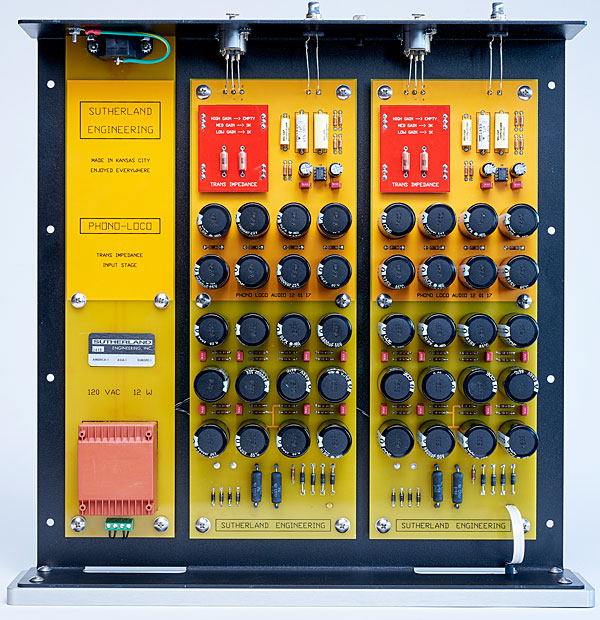
Miroslav Vitous's bass wasn't as nimble or well-defined as through the CH—which costs five times as much as the Phono Loco—but it was still deep and powerful.
I wish I'd had the Little Loco to compare to the Phono Loco, but even in light of the small deficiencies BD noted in his review, I'd say the Little Loco is probably a better value than the big one, and its slight leanness might even be preferable to the big one's slight thickness in that same area, though of course your system and cartridge choice may make the bigger one preferable—if you're looking for a transimpedance phono preamp.
Still, with its more generous sustain, overall liquidity, and memorable resolution of inner detail, I'd rather spend $5000 on the Boulder 508. Then again, the $3800 Little Loco might move me the other way.

A wonderful and informative review - as always.

Great Phono Sutherland Preamplifier

Michael, how would you compare the Phono Loco (or Little Loco if you had chance to check it out meantime) to the Channel D's Lino C and (I know this is a different animal but...) to the PS Stellar Phono?